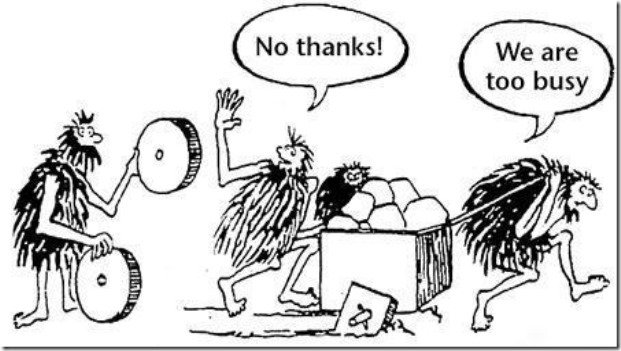
The Key to Mental, Physical and Technical Development for Athletes
By Corey Beasley
Over the last few weeks, I've been talking with a variety of coaches about Athletes Development. We discussed past performances, challenges that came up, training schedules, effort, intensity, volume and many other factors.
How do we make athletes better technically, physically and mentally?
The more that we talked, the more our conversations led back to consistency.
Some athletes train incredibly hard...sometimes two and three times each day. These guys 'burn too hot' and typically end up injured or burned out, which creates breaks in their training. These breaks lead to a reduction in cardio, strength, power, durability and confidence that is needed to perform.
Other athletes simply don't train enough. Work, family, responsibilities and other distractions keep them out of the gym and never seem to gather the momentum necessary, to improve. These guys just haven't made training a priority.
I believe the key to athletes development is developing a schedule and plan that you can commit to for long periods of time. Intensity and volume should fluctuate to allow the Athletes Development to improve, not just get tired. There are many factors involved, but lets walk through a few examples.
Example #1 - Consistently Inconsistent
 Lets say you simply want to get in shape. You might want to compete in your first tournament or want to improve over your last performance. You are not a full time athlete, but are interested in staying active and improving.
Lets say you simply want to get in shape. You might want to compete in your first tournament or want to improve over your last performance. You are not a full time athlete, but are interested in staying active and improving.
You'd like to get in 3 sessions of bjj and 3 gym workouts every week. You workout once per day, Monday - Saturday, but "life" gets in the way...work, family, car, friends, events, whatever...and you miss one workout.
Whatever the excuse may be, you missed training.
It might not seem like a big deal short term, but over the long term, it starts to add up.
Miss 1 workout each week = 50 missed sessions per year.
Over 5 years = 250 sessions.
10 years = 500 sessions.
Those missed sessions make it obvious why some people grow, change, evolve and improve...while others struggle to get ahead. Measured over time, it becomes blatantly obvious why some people gather momentum, improve and win.
Example #2 - Bursts of Effort
You are actively competing, have trained for awhile and working towards a big tournament or fight. Your goal is to win and you are willing to do whatever it takes to get ahead and improve.
Serious competitors typically train 1-3 times per day, 5-7 days per week and put their body through a tremendous amount of stress...not to mention work, family, social life, etc.
You're committed, train 2-3 times per day, go hard and never miss a session. You do your attend your skill sessions, lift, run, etc. Things start off well, but over time, you start to develop a few aches n pains. Maybe its your elbow, shoulder, neck, back, knee or other. These little aches and pains are your body's way of telling you that something's wrong. If you ignore or don't address these signals, they typically get worse over time and can lead to other ailments. Once the pain gets bad enough, your performance suffers and you're forced to miss workouts.
You go to the physical therapist and they recommend 4-6 weeks of therapy to relieve your neck pain. If you keep Athletes Development training and aggravating that area the pain lingers. Many want to continue working, but many of these types of things cannot be ignored. Ailments, like this could just be a minor set back, but when ignored, they get worse and lead longer bouts of inactivity.

Maybe you do too much work (volume), high intensity work everyday, not enough recovery, poor diet, bad habits, ego/pride...but the idea is that you go really hard and get sidelined mentally or physically and have to take a break. We see it happen all the time.
Whatever the reason, you take 4 weeks off and are not training. Your cardio slips, timing is off and you get stiff. Mentally you are less sharp and are eager to get back, but you know that you are falling behind the curve. Guys that you used to 'tune up' are improving and it starts to mess with your head.
When you get back to training, you want to go 100%, but your body isn't ready for it. You have to proceed carefully, get back into shape and slowly regain momentum. I've seen this happen two to three times per year and athletes wonder why they are constantly fighting injuries. If nothing changes, this downward spiral simply repeats itself and you're left wondering why 'things didn't go your way.'
When I spoke with Randy Couture, a couple years back, I asked him:
"How did you compete for so long?"
Randy competed at the highest level until he was 46 years old!
His response was simple.
"Win, lose or draw, I was back in the gym on Monday. I never let myself get out of shape. Many athletes compete and then disappear for a few weeks and then get hurt, trying to get back in shape."
Example #3 - Self Sabotaging
 Do you know anyone that just keeps making the same mistakes over and over?
Do you know anyone that just keeps making the same mistakes over and over?
Whether its training without a plan, drinking too much, poor eating habits, drugs, bad relationships, laziness or similar...some people just can't get out of their own way. This behavior can lead to missed sessions, long bouts of inactivity and eventually quitting all together.
This can be a delicate situation, but these destructive habits keep a lot of people from living up to their potential.
Take an honest assessment of your habits...What habits could you improve? What habits are holding you back?
Ask a few trusted coaches or training partners for their feedback...what you can do to improve?
This honest feedback is essential, if you want to improve.
Got a challenge that you can't solve? Ask for help, find a professional and spearhead that obstacle to get it solved.
Assess your situation...
 No matter what your situation is, it's vital that you develop a schedule that you can commit to. Not for a month or even a quarter...but commit to a schedule for years. We all have to overcome obstacles and adjust when times get tough, but the key is finding balance between "not enough" and "too much".
No matter what your situation is, it's vital that you develop a schedule that you can commit to. Not for a month or even a quarter...but commit to a schedule for years. We all have to overcome obstacles and adjust when times get tough, but the key is finding balance between "not enough" and "too much".
Take a few minutes and assess your current training habits...how does your body feel? Are you making progress? What people are holding you accountable and tracking your progress? Taking a step back, asking for advice and assessing your situation is essential for your long term success.
Remember, momentum works both ways, so if you are working hard, but not making progress, you could be training yourself into a hole.
Create your schedule, stay consistent and monitor your progress over time. Short term goals and great, but also develop 6 month, 1 year ad 5 year goals that are truly important to you. Short term goals help you week to week, but long term goals help you realize that you still have a lot of work to do.
Homework:
 Create a weekly schedule
Create a weekly schedule- Get some feedback from trusted coaches, family and/or training partners.
- Set some short term goals for the next 6-12 weeks
- Develop a plan to achieve that goal.
- Set some long term goals for the next year or two.
- Keep track of your training consistency on a monthly calendar.
Your consistency will create mental confidence, physical strength and improved technical proficiency. You won't always feel like doing it, but great Athletes Development have discipline to do the little things that others avoid. Take the time to make a plan, organize your schedule, cook good food, get some rest and you will slowly build momentum that cannot be stopped.
Not sure what to do?
Check out some of our Training Plans for Fighters and Grapplers.
We look forward to hearing about your progress!
Like What You Read? You Also Might Like...
Planning Your Weekly Training Schedule
Improve Body Composition and Speed Recovery




